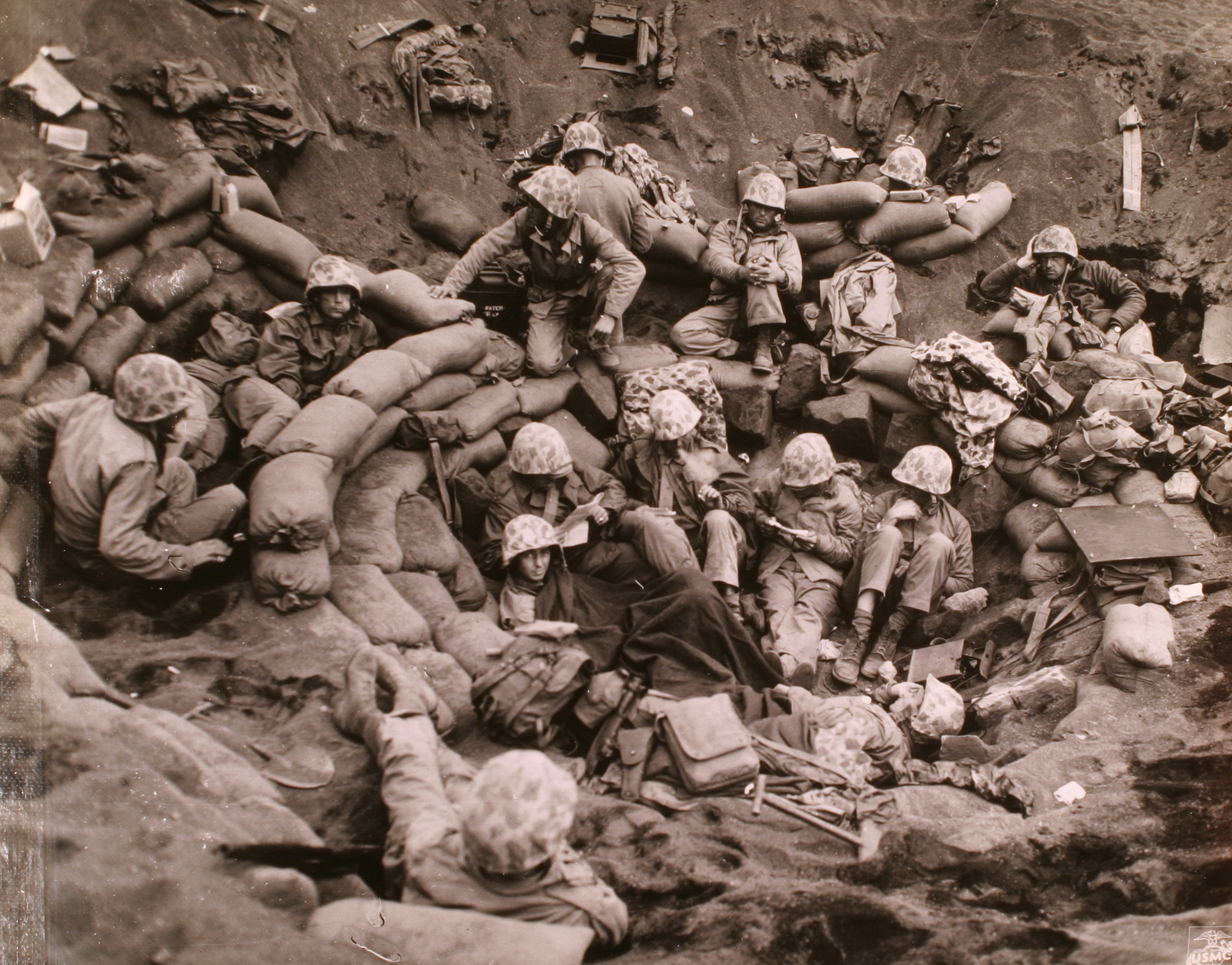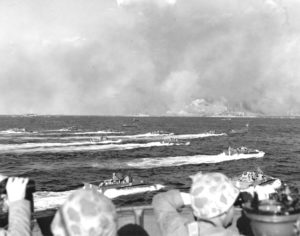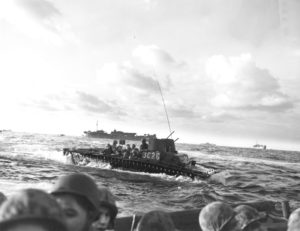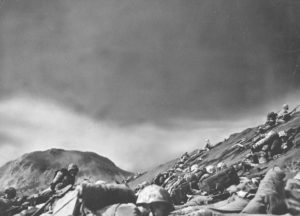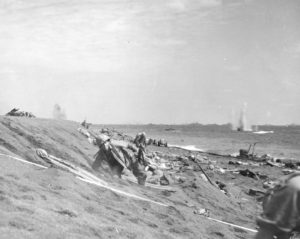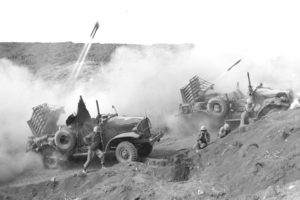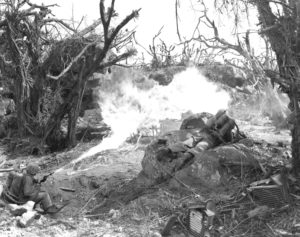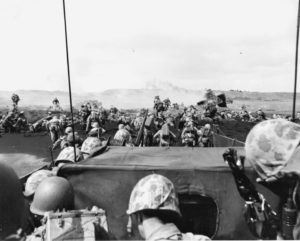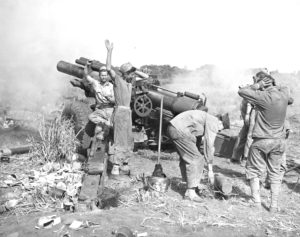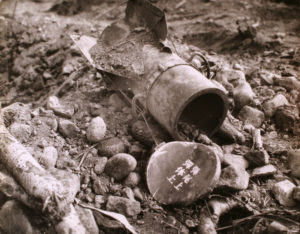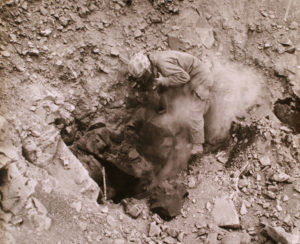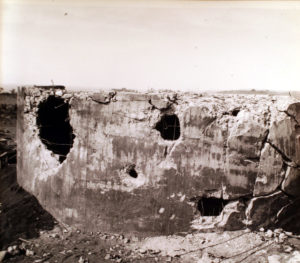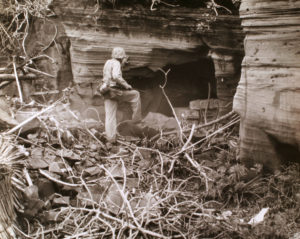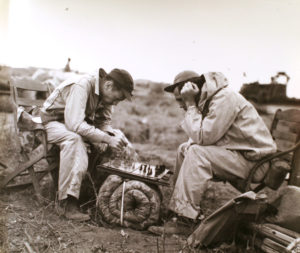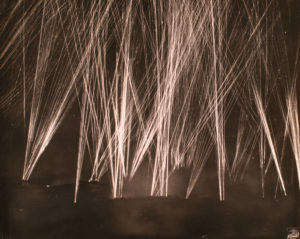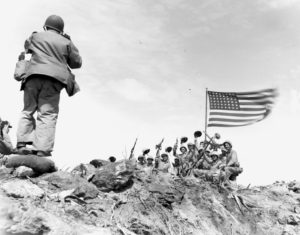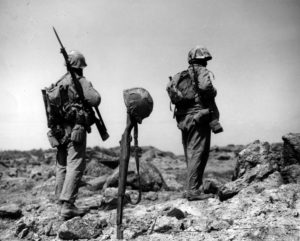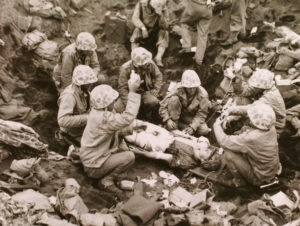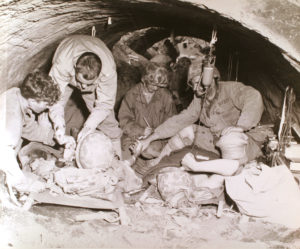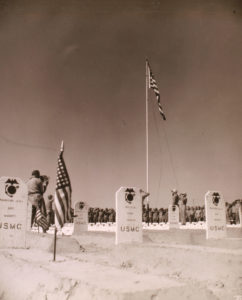Across black volcanic sand, U.S. Marines crawled, ran, and slipped towards the entrenched Japanese on Iwo Jima. Starting on the 16th of February, the U.S. Navy had engaged in a “softening up” operation and of the 30,000 men who were to wade ashore on the first day, it was predicted that reinforcements would not be needed. The island, although only a little over 4 miles long, was key to General Curtis Lemay’s bomber offensive on Japan’s home islands. On February 19, Marines were met by 21,000 Japanese soldiers and a dizzying network of caves, tunnels, and concrete pillboxes that a determined enemy used to deadly effect. The tenacious defense at Iwo forced Admiral Raymond Spruance to commit approximately 40,000 more men to the campaign.
Despite the iconic flag raising atop Mount Suribachi on February 23, the bloody battle would continue for nearly another month. However, the James V. Forrestal, the secretary of the Navy, observing the flag raising from a ship offshore, famously remarked to Major General Holland Smith that “the raising of that flag on Suribachi means a Marine Corps for the next 500 years.” One Marine noted that because of the taking heavy casualties no one knew if they were winning or losing. The flag raising created hope and, to him, signaled that the Japanese were going to have to kill every last American if they wanted the island.
The 36-day slog horrified military planners and American citizens alike. In the end, 6,821 Marines were killed with another 19,217 wounded. And of the Japanese, 212 defenders – only 1 percent of the original garrison – were still alive to surrender.
*Unless otherwise noted, all photographs are courtesy of the USMC Archives. Story updated on February 3, 2022.

